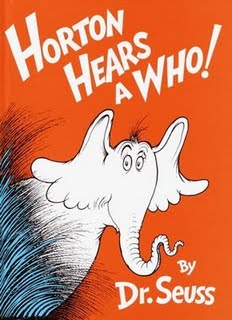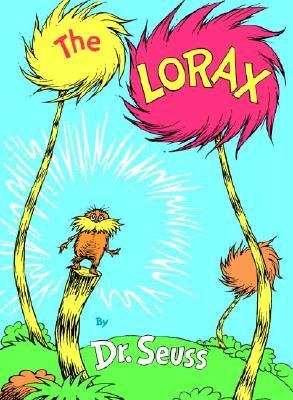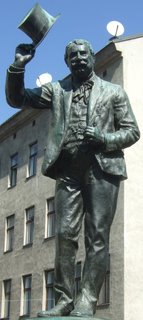I’m going to have a little fun today with Letters from Abroad and throw out a literary idea from left field. (Our photo today for Letters from Abroad is Herr Fiaker, a statue I pass on my walks commemorating a beloved carriage driver.)
I want to look at an author—incredibly influential, fantastically talented, one with deep insight into humanity—whom I never would have thought of as connected to science fiction or fantasy until I conceived these blogs. I don’t think anyone here would think of the name of this author either. This author is arguably as influential as H.G. Wells, Isaac Asimov, Bram Stoker, and others in that vein.
I was pondering science fiction, fantasy, and children’s books on one of my long walks, and it occurred to me there was a link not normally considered. An author whose voice we all heard telling us stories when we hardly understood the world beyond the steps of our family’s apartment, or the yard outside of our house—which seemed so large at the time, and so unknown.
 Dr. Seuss, of course.
Dr. Seuss, of course.
Now hear me out. He wrote about strange civilizations populated by odd, humanoid creatures. And, most importantly, he used these stories of alternate civilizations to show us something about our own humanity.
The Whos of Who-ville, introduced in Horton Hears A Who!, are microscopic creatures living in a world the size of a speck of dust—it sounds like sci-fi or fantasy to me—and the book itself is a brilliant commentary on community, using mathematical concepts like numbers and a bound (the “one-more-voice” needed for Horton to hear them is the voice that breaks the lower bound necessary to reach an audible tone—so many is not enough, but so many + one is).
Meanwhile, the possible interpretations of the story include: a commentary on democracy (that your single vote counts even though it doesn’t seem so when many people vote); a commentary on how even one person of no great importance can still make a difference to society; and the one the Doctor himself writes:
“Even though you can’t see or hear them at all, a person’s a person, no matter how small.”
Has any author ever invented a type of humanoid creature as well-known or beloved as the Whos? Even Orcs and Ents may have to step aside for the Whos. (Okay, I admit it’s true, the Doctor seems to have changed their size for their appearance in The Grinch, at least as far as I can tell, and that’s undoubtedly a science fiction no-no.)
Then there is the tale of The Lorax, of course, possibly the most entertaining story ever of ecological disaster, again making a social commentary, this time about the over-exploitation of natural resources (a scientific topic), and using an imagined world and a technological advance (the ability to make Thneeds from a certain species of tree, if I remember right, correct me if I’ve got this wrong) to drive the story.
 Is a Thneed really something everyone needs?
Is a Thneed really something everyone needs?
There is an obvious connection between many children’s books and sci-fi/fantasy, from Ursula LeGuin’s amazing The Wizard of Earthsea—still one of the best fantasy books for kids out there, even thirty years later—to the more recent, very original The Golden Compass by Pullman (published first in the UK as Northern Lights). But as an author focused on third, fourth, and fifth graders, I have been thinking about science fiction and fantasy as it relates, less obviously, to the very first stories kids hear.
Green Eggs and Ham, then, was the first book I ever read. Ever. I was four and had every word memorized because it had been read to me so often. So I just opened the book one day when my mother was too busy to read it to me, and pointed to each word as I recited the poem from memory.
And I asked my parents once: “Are there really green eggs?” And they said “No, not really.” How could he write about it, then, I wondered. What did he mean? (Oddly I never wondered, on the other hand, what kind of creature Sam I Am was!)
Was that my introduction to the world of science fiction and fantasy right there? Yes, I think it was. Don’t forget that, though the Doctor included no hard science in his books, he did draw many wonderful, complicated contraptions that are like the little kid version of high technology. To me, then, just intuitively, the Doctor seems more like science fiction than fantasy.
The Grinch? The Cat in the Hat? The Sneetches? The Sneetches concerns a technological innovation: one machine that can put stars onto Sneetches and another that takes them off, in a world where being marked by a star is important. In that same book is a story of a south-going Zax and a north-going Zax who, meeting each other, cannot continue because neither one will take even one step aside. This is a mathematical concept applied to humanism.
I think we must say that the amazing Doctor (Seuss, not Who) was writing something very like sci-fi, speculative fiction, or fantasy. Or, to put it more accurately, that science fiction and fantasy authors, past and present, write books at least in part within a tradition of literature of which Dr. Seuss was one of the masters.
The fundamental idea—telling stories that take place in a twisted world, both like and unlike our own, in order to hold up a mirror to ourselves—was certainly the method employed by Dr. Seuss. The fact that he does it for children of such a young age is beside the point, except that it means his was the first voice we heard telling stories of the sort. (On his illustration and his poetry, I will leave artists and poets to comment).
The hard science, of course, is missing.
What do you think? Am I the only one who, intuitively, sees a link to science fiction in the stories of Dr. Seuss? Are there examples and counterexamples? Did he subtly set the stage for all of us who would later start to read science fiction and fantasy books? Did hearing his stories change the way you thought of stories even when you were very young? Is there something about how his creatures aren’t based on real creatures (the way many young children’s may use animals or similar) that makes them different? When you read your first book with an alien creature is it possible the creations of Dr. Seuss were in the background somewhere? Or is it more his logical tricks and use of permutations (in a boat? with a goat?) that relate him to math?
Keith McGowan is the debut author of The Witch’s Guide to Cooking with Children, which was named an “inspired recommendation for children” by independent bookstores nationwide. He is published by Christy Ottaviano Books, Henry Holt & Company.











Another obvious connection between Dr. Seuss and SF is the way that his library on the UCSD figures so prominently in the action in Vernor Vinge’s Rainbows End. I submit that the action in the book would not have worked nearly so well if it had been, say, the Raymond Chandler Library, or the Dashiell Hammett Library.
If you’re going to talk about alien creatures, then you have to include one of my favorites, “If I Ran the Zoo.”
And for math, don’t forget “The 500 Hats of Bartholomew Cubbins”
And then there’s that discourse on the creative imagination, “And to Think That I Saw it on Mulberry Street”
I am in my 50s and my kids are in their teens, so I haven’t read these in a while, but they all come right back.
Yes, absolutely.
The Sleep Book did it for me. Seeing all those people/creatures/beings sleeping in all those different situations really made me wonder about their circumstances, more than any of his other books. Why were their houses shaped like that? What did they have for dinner? What color was the sun when it came up? And so on, forever. It really opened my mind to the idea of things being different from what I was used to. And I’ve noticed that now, decades later, I love good descriptions of cultures that really dig into the details of where and how people live, as long as it’s very different from mine.
I have always imagined the Ways in Robert Jordan’s Wheel of Time series to be like some of the bridges in Dr. Seuss’ work.
Dr. Seuss is definitely mostly SF, even if just for the weird creatures. There’s got to be some kind of biotech revolution to get stuff like the things we see in One Fish, Two Fish, Red Fish, Blue Fish
As kids, we ate green eggs and ham for dinner every Halloween, so I don’t remember ever asking if there was such a thing.
As kids, we ate green eggs and ham for dinner every Halloween, so I don’t remember ever asking if there was such a thing.
That rocks! What a great idea!
And truly, I never considered Dr. Seuss to be sff related but actually thinking on it – I say, ‘of course!’.